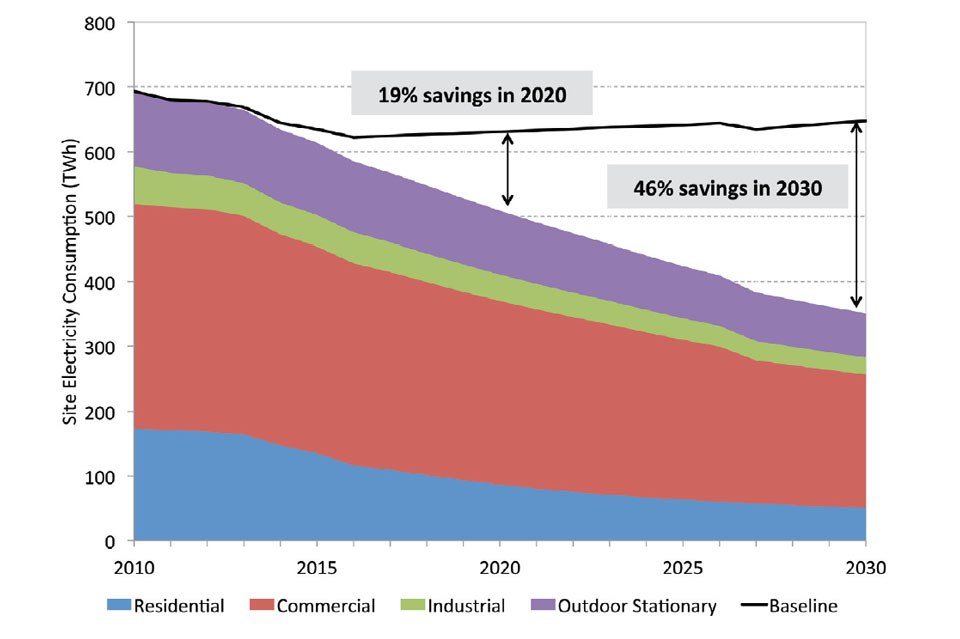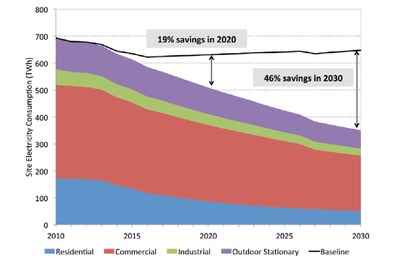Energy Savings Potential of Solid-State Lighting in General Illumination Applications
The U.S. Department of Energy (DOE) has developed a comprehensive strategy to accelerate the development and market introduction of energy-efficient solid-state lighting for general illumination. The energy savings potential of this technology is significant, and the U.S. will benefit by focusing our resources and maintaining our global leadership in this technology. The latest report forecasts the energy savings potentiol due to LED technology.
The DOE report Energy Savings Potential of Solid-State Lighting in General Illumination Applications forecasts the energy savings potential of light-emitting diode (LED) white light sources compared to conventional white light sources (i.e., incandescent, halogen, fluorescent, and high intensity discharge). Using an econometric model of the U.S. lighting market, the annual lighting energy consumption under a scenario considering the growing market presence of LEDs is compared to the energy consumption under a baseline scenario, which hypothesizes no additional market penetration of LEDs beyond current levels.
The econometric lighting market model relies on assumptions of projected LED and conventional technology efficacy, retail price, and operating life. These inputs are based on work conducted collaboratively between DOE and industry experts, including members of the Next Generation Lighting Industry Alliance, an SSL technical working group managed by the National Electrical Manufacturers Association.
Key Results:
• Assuming LED lamps and luminaires meet their expected efficacy, lifetime, and price targets, LED lighting is projected to gain significant market penetration. By 2020, LED lighting is expected to represent 36 percent of lumen-hour sales of the general illumination market. By 2030, it is expected to grow to 74 percent of lumenhour sales.
• In 2030, the annual site energy savings due to the increased penetration of LED lighting is estimated to be approximately 300 terawatt-hours, the equivalent annual electrical output of about fifty 1,000-megawatt power plants. At today’s energy prices, that equates to approximately $30 billion of savings in 2030 alone. Assuming the current mix of generating power stations, these energy savings would reduce greenhouse gas emissions by 210 million metric tons of carbon. The total electricity consumption for lighting would decrease by roughly 46 percent relative to a scenario with no additional penetration of LED lighting in the market—representing enough electricity to completely power 24 million homes in the U.S. today.
• Over the 20-year analysis period, spanning 2010–2030, the cumulative energy savings is estimated to total approximately 2,700 terawatt-hours, representing approximately $250 billion at today’s energy prices. Assuming the electric power plant generating mix is held constant over the next two decades, these savings would reduce greenhouse gas emissions by 1,800 million metric tons of carbon.
The full report with more detailed results can also be found at www.ssl.energy.gov/tech_reports.html.
To learn more about DOE Solid-State Lighting program activities, visit www.ssl.energy.gov.


